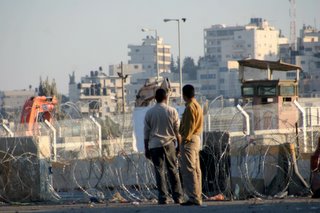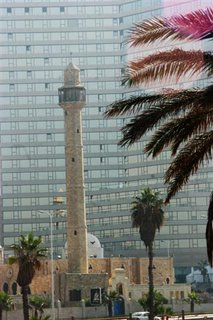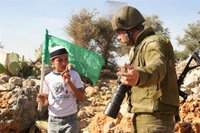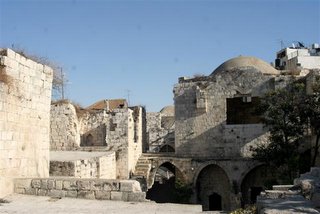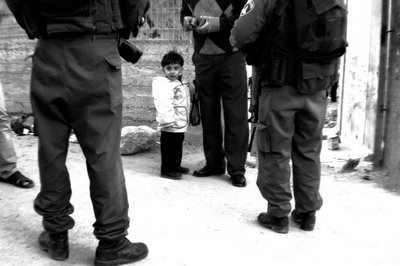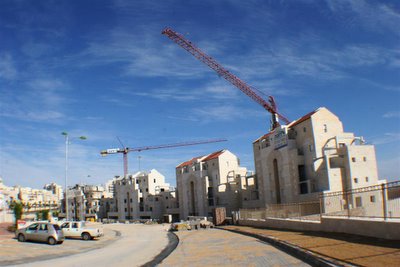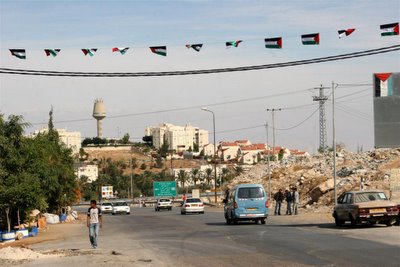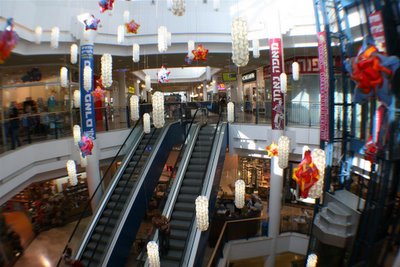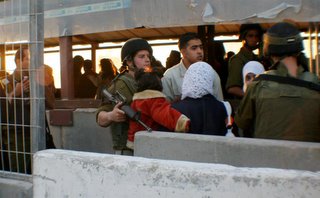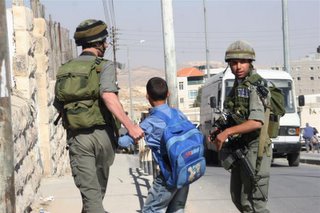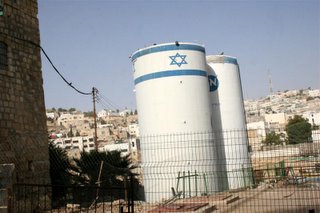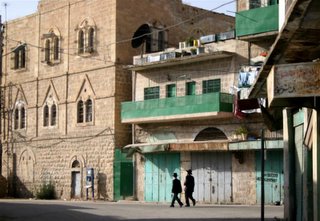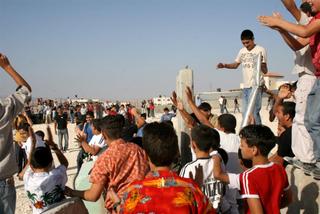Bonjour,
Chaque année le Collectif 69 organise un festival sur la Palestine.
Lors de ma tournée avec mon exposition photo, j'avais déjà eu des déboires l'année dernière avec la mairie de Lyon. les politiques, et notamment le Maire de Lyon, avaient subi des pressions pour que mon exposition ne soit pas montrée dans de bonnes conditions.
Cette année encore; les événements démontrent combien il est difficile d'organiser des manifestations autour de la Palestine puisque des expositions prévues dans des mairies d'arrondissements ont toit simplement été annulées à la dernière minute. Je comprends que le sujet soit sensible mais c'est justement parce qu'il est sensible qu'il faut en parler et en débattre.
La censure est l'arme des lâches et nos politiques sont en train d'oublier le sens noble du terme "politique". En tant que citoyens nous devons nous élever contre cette tendance dangereuse, cette atteinte à la liberté d’expression et la démocratie. La Palestine et les Palestiniens existent, n’en déplaisent à certains et ils ont le droit d’être entendus comme nous avons le droit, en tant qu’artiste, de les choisir en tant que sujets.
Mon exposition sera quand même présentée dans le cadre du festival; après aussi bien des déboires pour trouver une salle. Elle sera visible du mardi 15 au Jeudi 24 novembre à l'université Lyon II; à Bron entre 11h30 et 14h30. Des nouvelles photos ont été ajoutées à l'exposition de 2004-2005.
De Palestine,
Anne.
Collectif 69 de soutien au peuple palestinien
c/o Maison du Peuple. 147, avenue du Général Frère. 69 008 LYON
courriel : palestine69@wanadoo.fr ; site Internet : http://collectif69palestine.free.fr
Communiqué de presse Vendredi 11 novembre 2005
Quinzaine culturelle «Regards sur la Palestine» : annulation d’expositions en Mairie de Lyon
La quinzaine culturelle « Regards sur la Palestine » a débuté à Lyon le 8 novembre par une belle soirée cinématographique, devant un public très nombreux, à l’Institut Lumière, autour du film « La porte du soleil », en présence du réalisateur Yousri Nasrallah.
18 manifestations sont prévues à LYON et son agglomération du 8 au 25 novembre : Cinéma, conférences, théâtre de marionnettes, spectacle, soirée littéraire, poésie, concert, exposition photos, peinture, calligraphies et mosaïques, broderies et poteries, stands de livres sont proposées pour faire découvrir et montrer la Palestine et les Palestiniens au-delà des clichés et des images de guerre.
La culture aide à la connaissance et à la compréhension de l'autre et est un vecteur de paix.
Mahmoud DARWICH nous rappelle que : "Le poète est celui qui doute et accepte l'autre. Il me semble que la poésie est liée à la Paix".
Dans le cadre de cette quinzaine culturelle, trois Mairies d’arrondissement (1er, 4ème et 5ème) avaient accepté d'accueillir des expositions d’artistes et artisans palestiniens. Ces manifestations prévues depuis plusieurs mois sont d'ailleurs annoncées dans de nombreux supports de communication (programmes, cartons d’invitations, Lyon citoyen…)
Le Maire de Lyon, Monsieur COLLOMB, refuse en dernière minute que ces expositions se tiennent dans les Mairies d’arrondissement. Cette décision intervenue mardi dernier, soit 4 jours avant le premier vernissage prévu ce samedi 12 novembre en Mairie du 4ème met les artistes et le Collectif dans une situation inacceptable.
Nous sommes extrêmement surpris et choqués par le manque de respect du travail réalisé par les artistes et de l'engagement personnel de nombreux lyonnais. Parmi lesquels les maires et les équipes municipales concernés par ces expositions. Il nous semble que les maisons des citoyens que sont les Mairies peuvent participer au débat public, peuvent donner à voir et à comprendre d’autres cultures. Les lyonnais et lyonnaises souhaitant découvrir les arts et la culture palestinienne sont aptes à se faire leur propre opinion.
En quoi les poèmes de Mahmoud Darwish, les calligraphies, les poteries et mosaïques, les broderies et l’architecture justifieraient une telle mesure ?
Nous demandons à Monsieur le Maire de Lyon de revenir à de plus justes mesures et de permettre à la quinzaine culturelle palestinienne de se dérouler, comme prévu, dans un climat serein.
Dans l’attente, nous avons décidé d’être présents aux vernissages sur les lieux prévus il y a encore peu, et de montrer aux lyonnais ce dont ils risquent d'être privés.
Samedi 12 novembre à 11h30 Mairie du 4ème, 133 boulevard de la Croix Rousse 69004 LYON
Lundi 14 novembre à 18 h Annexe de la Mairie du 5ème, 5 place du petit collège 69005 LYON
Mardi 15 novembre à 18 h Mairie du 1er, 2 place Sathonay 69001 LYON
Pour rappel : Manifestations prévues dans les Mairies d’arrondissements
Samedi 12 novembre à 11h30
Vernissage de l’exposition : calligraphies et mosaïques :
Calligraphies d'Ahmed DARI (délégué adjoint auprès de l'UNESCO pour la Palestine) et mosaïques de Iyad ABDOH. Tableaux (encres et aquarelles sur papier) inspirés de la poésie arabe (textes du poète Mahmoud Darwich).
Mairie du 4ème, 133 boulevard de la Croix Rousse 69004 LYON
E Exposition du 14 au 25 novembre de 14h à 18 h30 sauf dimanche (entrée libre)
E Nocturne : Mardi 22 novembre jusqu’à 20h En présence d’Ahmed DARI, suivie d’un repas palestinien
Lundi 14 novembre à 18 h
Vernissage de l’exposition « Hébron patrimoine mondial en danger »
Exposition de Thierry POTHIER (architecte) et de Bilal MHAISEN (école d'architecture de Lyon)
« Hébron, l'une des plus vieilles villes du monde est d’une très grande richesse architecturale et historique. Son patrimoine n’est cependant pas classé par l’UNESCO au patrimoine mondial, à cause de l’occupation israélienne et de la non reconnaissance des territoires palestiniens comme un Etat. Hébron est menacée par l’extension des colonies et la construction des routes de contournement. De nombreuses maisons anciennes ont déjà été détruites et d’autres risquent le même sort. »
Annexe de la Mairie du 5ème, 5 place du petit collège 69005 LYON
E Exposition du 14 au 25 novembre de 9h à 18h30 sauf samedi et dimanche (entrée libre)
Mardi 15 novembre à 18 h
Vernissage de l’exposition / Vente : Broderie et Poteries
Echarpes, gilets, tuniques, robes, pochettes, coussins,...dont les motifs inspirés de dessins très anciens sont brodés à la main. Le produit des ventes est reversé à l'association Najdeh qui aide femmes et enfants réfugiés palestiniens au Liban
Céramiques et verreries, productions traditionnelles d'artisans d'Hébron en Cisjordanie.
Mairie du 1er, 2 place Sathonay 69001 LYON
palestine69
a écrit :
De: "palestine69"
À: <"Undisclosed-Recipient:;"@wanadoo.fr>
Objet: "Regards sur la Palestine" 9/17
Date: Sun, 13 Nov 2005 17:03:44 +0100
Après l'interdiction des expositions dans les mairies du 1er, 4e et 5e arrondissements de Lyon par le maire Gérard Collomb, nous invitons chacun et chacune :
- à lui écrire sa désapprobation : Monsieur Gérard COLLOMB, maire de Lyon - Mairie Centrale - Place de la Comédie
BP 1065 - 69205 Lyon Cedex 01
- à venir au vernissage des 2 expositions, comme nous l'avons fait samedi,
Lundi 14 novembre à 18 h Annexe de la Mairie du 5ème, 5 place du petit collège 69005 LYON (métro D – Vieux Lyon)
Mardi 15 novembre à 18 h Mairie du 1er, 2 place Sathonay 69001 LYON (métro A – Hôtel de Ville – bus 6, 13, 18)
Quinzaine culturelle "Regards sur la Palestine"
________________________________________
Jeudi 17 novembre à partir de 18h30
Vernissage de l’exposition / vente de peintures « Dix peintres de Gaza »
« Une importante exposition collective consacrée à des artistes contemporains originaires de Palestine »
Galerie « Regards Sud » 3 rue des Pierres Plantées 69001 LYON
Exposition du 17 au 25 novembre du mardi au samedi de 14h à 19h (entrée libre)
et toujours la possibilité de prendre des billets pour :
Vendredi 25 novembre
« VOIX de PALESTINE »
Bourse du Travail de Lyon Place Guichard 69003 LYON
Avec Leila SHAHID, déléguée générale de Palestine en France
18h30 Expositions, diaporama, poésie, librairie…
20h30 Concert : Marcel KHALIFE,
"artiste de l’UNESCO pour la paix" chante Mahmoud DARWICH
Réservations : www.fnac.com , www.leprogres.f
ENGLISH
Every year the association Colectif 69 organised a two-weeks festival on Palestine. This year some exhibitions wich were scheduled for months in certains public buildings owned by the municipality were cancelled at the last minute by the mayor. It was not a surprise for me as I had some problems last year to present my photo exhibition on Palestinian children. Finally I could present it but in a remote tiny social center, at the outkirst of Lyon which was clearly after a change of last minute. then I heard that there had been some tremendous pressures on the municipality and that the Mayor himself was unhappy to host my exhibition, even in a remote and tiny venue.
So this year again, censorship was used. It seems that it is more and more difficult to talk about Palestine. Politicians, instead of taking their responsability cowardly back up. But Palestine and Palestinians do exist and have the right to express themselves, and artists will continue to raise their voices. We should not close our eyes and let the politicians shut up a useful debate. I will keep my camera and eyes open.

